The Twelve Days of Christmas: A Festive Journey Through the Beloved Carol
Related Articles: The Twelve Days of Christmas: A Festive Journey Through the Beloved Carol
- 12 Days Of Christmas Lyrics Aussie 2024: A Festive Aussie Twist
- The Twelve Days Of Christmas: A Religious Exploration Of The Beloved Holiday Carol
- The Twelve Days Of Christmas: A Filipino Lyric Interpretation For 2024
- The Ultimate 12 Days Of Christmas Gift List For 2024
- The Twelve Days Of Christmas: A Lyrical Journey Through Holiday Traditions
Introduction
In this auspicious occasion, we are delighted to delve into the intriguing topic related to The Twelve Days of Christmas: A Festive Journey Through the Beloved Carol. Let’s weave interesting information and offer fresh perspectives to the readers.
Table of Content
Video about The Twelve Days of Christmas: A Festive Journey Through the Beloved Carol
The Twelve Days of Christmas: A Festive Journey Through the Beloved Carol
:no_upscale()/cdn.vox-cdn.com/uploads/chorus_image/image/68115579/12dayspyramid.0.0.0.0.png)
As the holiday season approaches, the enchanting melody of "The Twelve Days of Christmas" fills the air, evoking a sense of joy and anticipation. This beloved carol, with its repetitive verses and cumulative nature, has become an integral part of Christmas celebrations worldwide. In this article, we will embark on a lyrical journey through each of the twelve days of Christmas, exploring the symbolism, traditions, and historical significance behind this timeless classic.
The First Day of Christmas: A Partridge in a Pear Tree
The carol begins with a simple yet captivating image: "On the first day of Christmas, my true love sent to me, a partridge in a pear tree." The partridge, a small game bird native to Europe, represents the unity and harmony of the Christmas season. The pear tree, with its sweet and juicy fruit, symbolizes prosperity and abundance. Together, these gifts embody the spirit of giving and receiving that lies at the heart of Christmas.
The Second Day of Christmas: Two Turtle Doves
On the second day, the carol introduces two turtle doves, symbolizing love, peace, and the Holy Spirit. Doves have long been associated with purity and innocence, making them a fitting representation of the divine presence during the Christmas season.
The Third Day of Christmas: Three French Hens
The third day brings three French hens, a nod to the French tradition of giving poultry as Christmas gifts. Hens, with their ability to lay eggs, represent fertility and new beginnings, themes that resonate deeply with the birth of Christ.
The Fourth Day of Christmas: Four Calling Birds
On the fourth day, we encounter four calling birds, symbolizing the four evangelists: Matthew, Mark, Luke, and John. Their calling represents the spreading of the Gospel message, reminding us of the spiritual significance of the Christmas season.
The Fifth Day of Christmas: Five Golden Rings
The fifth day introduces five golden rings, representing the five wounds of Christ on the cross. These rings serve as a reminder of the sacrifice made by Jesus and the redemption it brought to humanity.
The Sixth Day of Christmas: Six Geese A-Laying
The sixth day brings six geese a-laying, symbolizing the six days of creation. Geese, known for their protective nature, represent the watchful care of God over his creation.
The Seventh Day of Christmas: Seven Swans A-Swimming
On the seventh day, seven swans a-swimming appear, representing the seven gifts of the Holy Spirit: wisdom, understanding, counsel, fortitude, knowledge, piety, and fear of the Lord. These gifts empower believers to live in accordance with God’s will.
The Eighth Day of Christmas: Eight Maids A-Milking
The eighth day introduces eight maids a-milking, symbolizing the eight Beatitudes of Christ’s Sermon on the Mount. These Beatitudes describe the qualities of those who will inherit the Kingdom of Heaven, reminding us of the importance of humility, compassion, and righteousness.
The Ninth Day of Christmas: Nine Ladies Dancing
On the ninth day, nine ladies dancing appear, representing the nine Fruits of the Holy Spirit: love, joy, peace, patience, kindness, goodness, faithfulness, gentleness, and self-control. These fruits are the evidence of God’s presence in our lives.
The Tenth Day of Christmas: Ten Lords A-Leaping
The tenth day brings ten lords a-leaping, representing the ten commandments given to Moses by God. These commandments provide guidance for righteous living and remind us of our obligation to obey God’s laws.
The Eleventh Day of Christmas: Eleven Pipers Piping
On the eleventh day, eleven pipers piping appear, symbolizing the eleven faithful apostles who followed Jesus. Their music represents the spreading of the Gospel message throughout the world.
The Twelfth Day of Christmas: Twelve Drummers Drumming
The carol culminates with twelve drummers drumming, representing the twelve days of Christmastide, the period between Christmas Day and Epiphany. These drummers symbolize the joy and celebration that accompany the Christmas season.
Historical Origins and Cultural Significance
The origins of "The Twelve Days of Christmas" can be traced back to a French folk song called "Les Douze Jours de Noël," which was first published in the 18th century. The song quickly gained popularity in England and other parts of Europe, and its lyrics have undergone various changes over time.
In the United States, the carol was introduced in the early 19th century and has since become a beloved Christmas tradition. It is often sung at parties, gatherings, and church services, bringing people together in a spirit of joy and festivity.
Conclusion
"The Twelve Days of Christmas" is more than just a catchy tune; it is a timeless classic that encapsulates the joy, symbolism, and spiritual significance of the Christmas season. As we sing its verses, we are reminded of the unity, peace, love, and redemption that are central to the Christian faith. May this beloved carol continue to fill our hearts with warmth and cheer for generations to come.
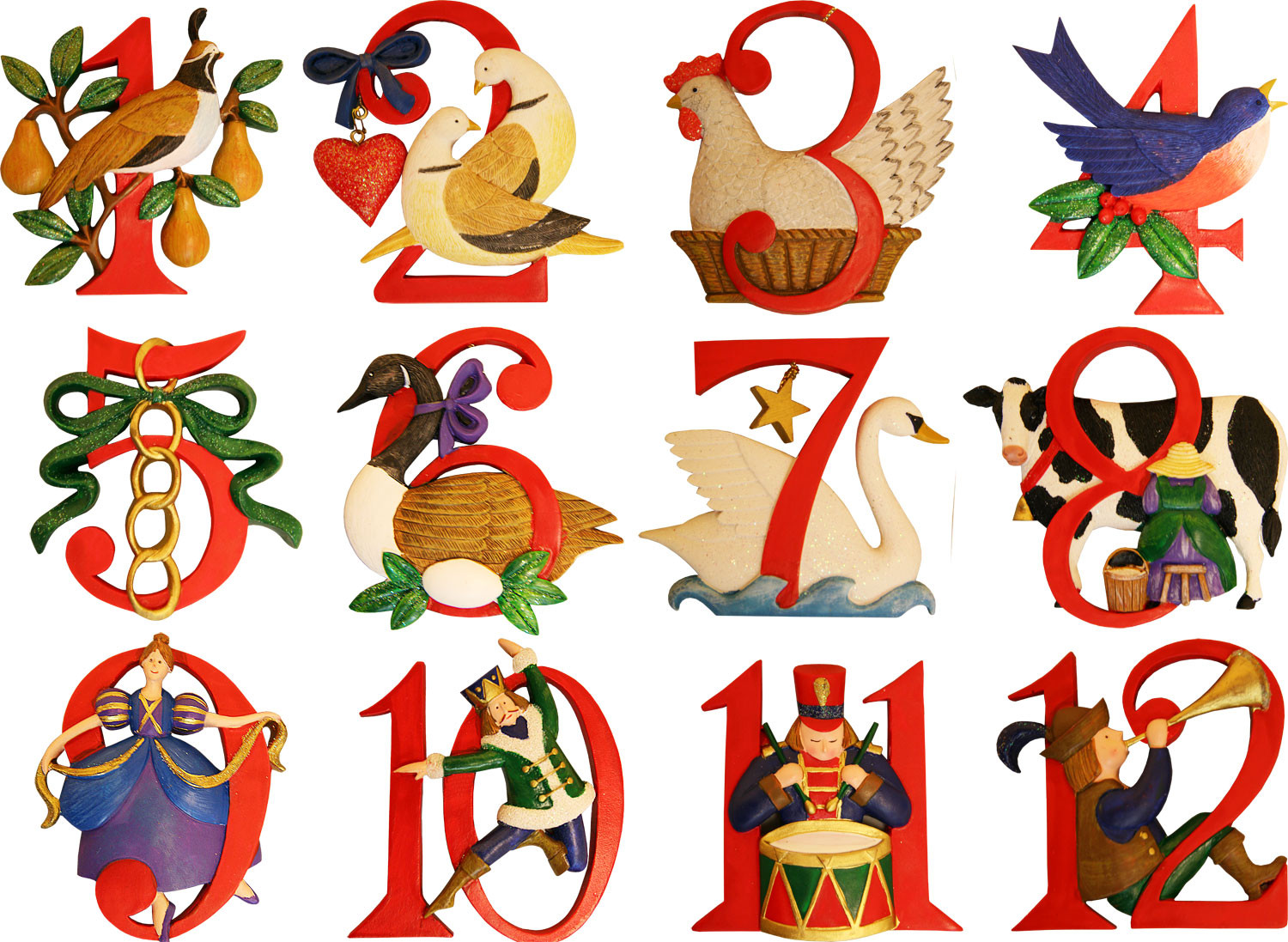
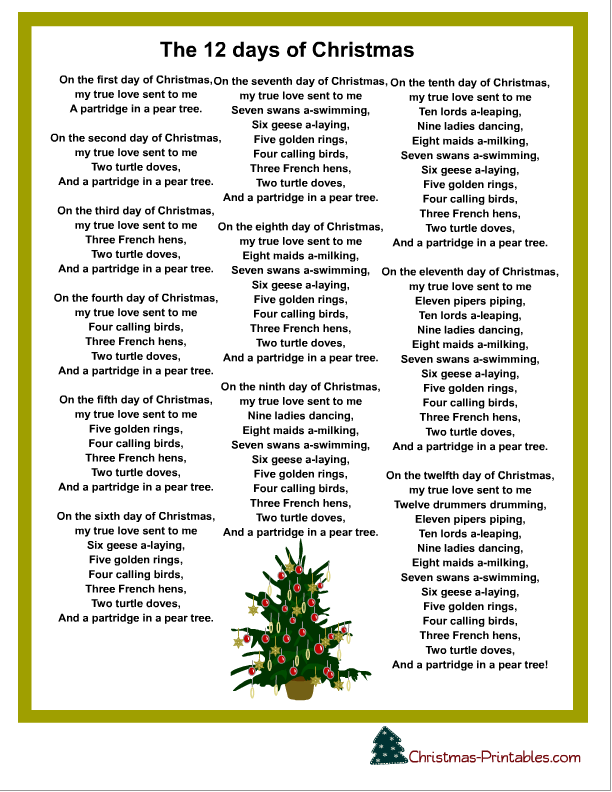
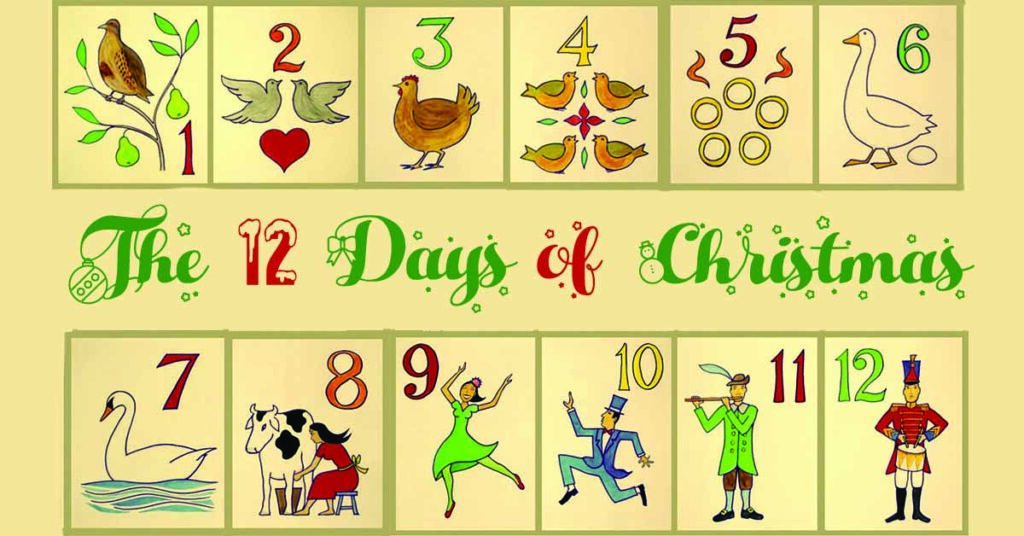

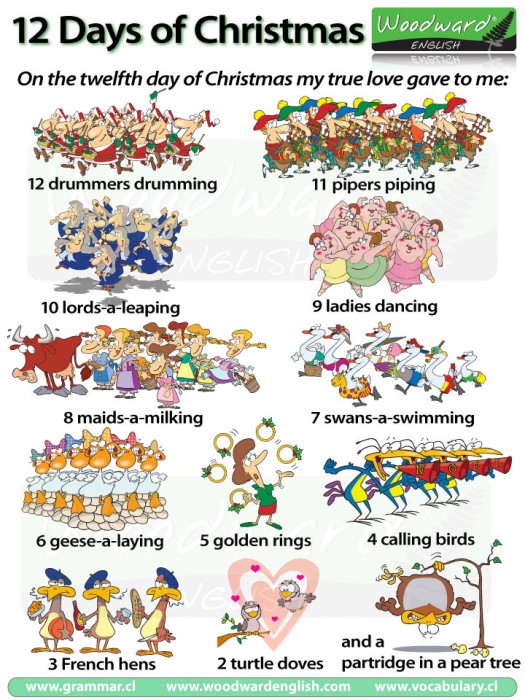
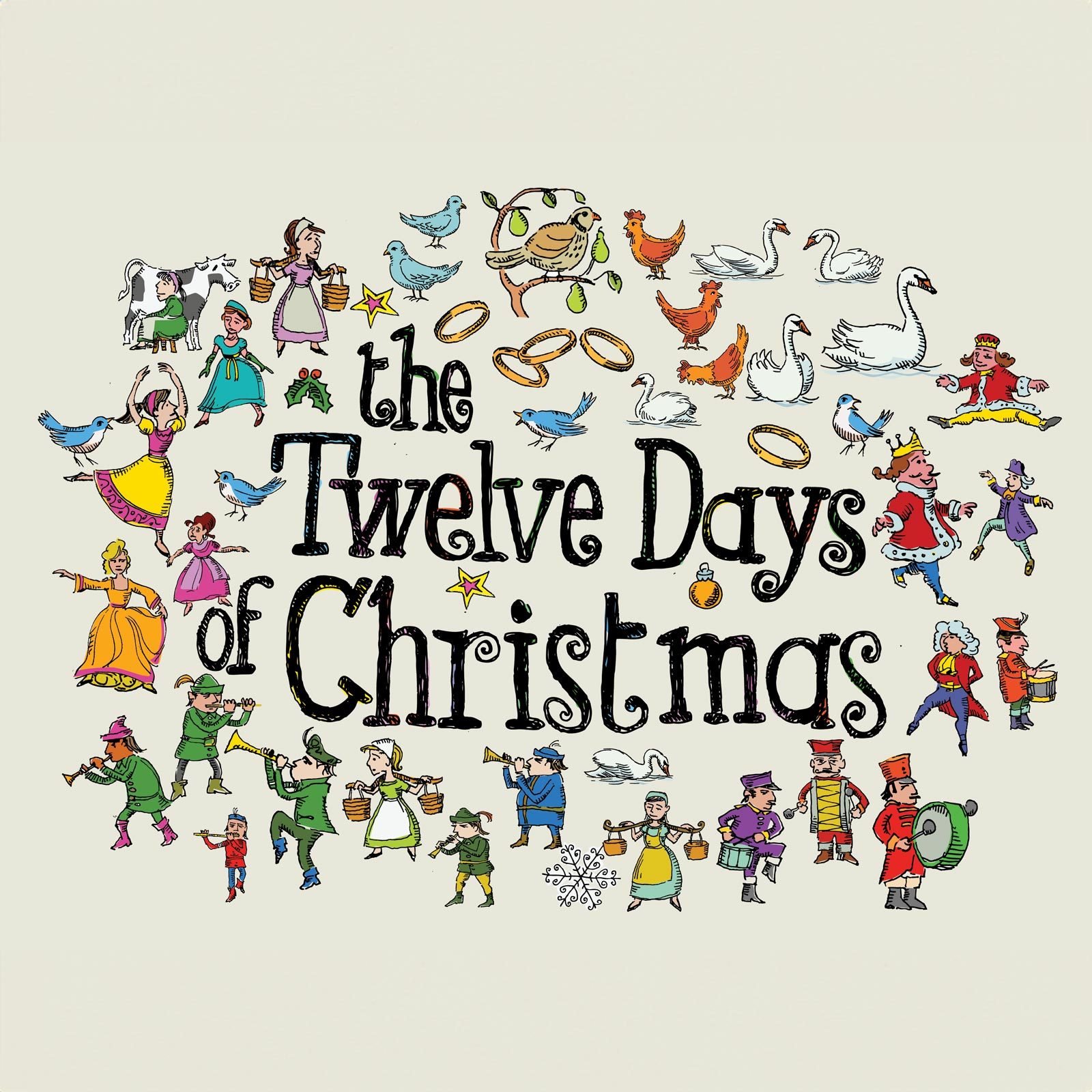

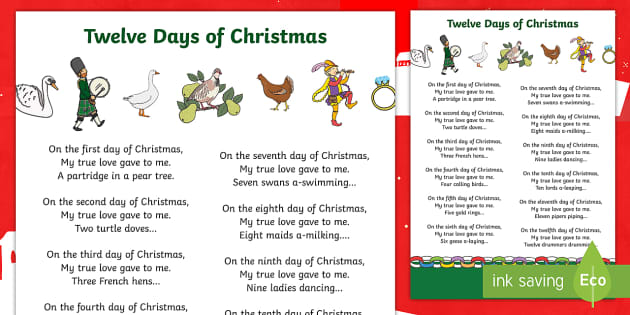
Closure
Thus, we hope this article has provided valuable insights into The Twelve Days of Christmas: A Festive Journey Through the Beloved Carol. We appreciate your attention to our article. See you in our next article!